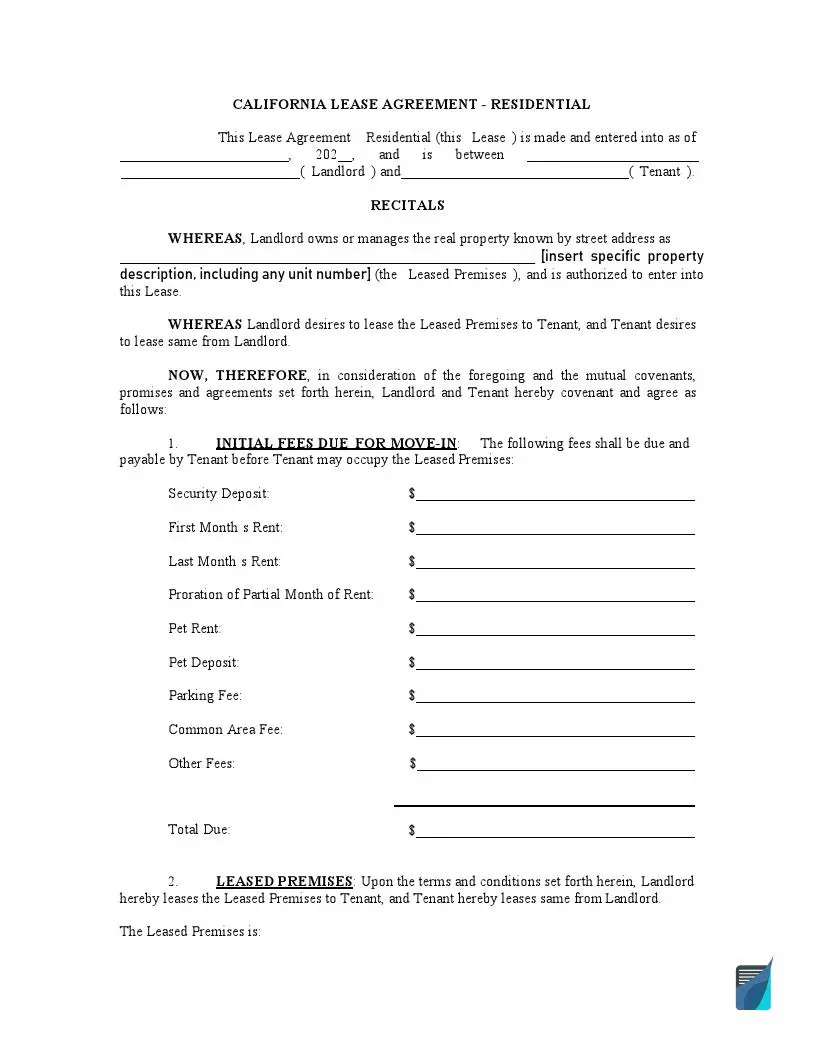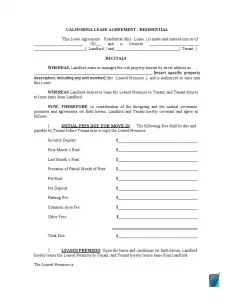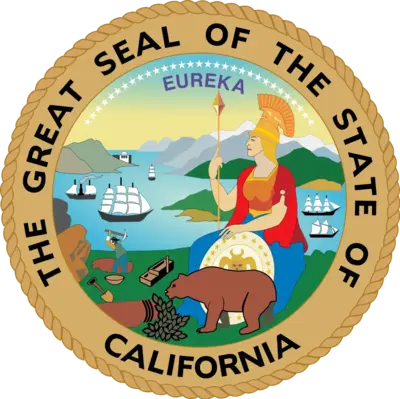California Rental Lease Agreement Forms
A rental agreement is a legal form that two parties use when closing a deal related to space leasing. Regardless of whether the two parties are individuals or entities, the one temporarily giving away the property is the “landlord” or the “owner,” while the one getting the property is the “tenant” or the “renter.”
In California, as well as in other states, a rental (or lease) agreement is a detailed document that lists the main features of the deal: amount, space description, conditions, information about the landlord and the renter, and so on. Typically, every rental agreement form is no less than 10 pages long because of all the details parties need to include.
To download the right template of this agreement for California or other states, you may use our form-building software.

Build Your Document
Answer a few simple questions to make your document in minutes
Save and Print
Save progress and finish on any device, download and print anytime
Sign and Use
Your valid, lawyer-approved document is ready
California Laws and Lease Requirements
Different states have different regulations for lease agreements. In California, you may learn about the majority of relevant laws in Division 2 and 3 of the Civil Code. Division 3, Part 4, Title 5, Chapter 2 tells about leasing and the rights of owners and renters. Besides that, there is a separate California Tenants guide released by the Department of Consumer Affairs (DCA).
Security Deposit Regulations
As stated in Section 1950.5 of state law, in California, the maximum amount of the deposit varies depending on whether the property has furniture or not. In all cases, it is up to three months’ worth of rent.
When the rented space has furniture, the tenant may be required to give up to three months’ rent as a security deposit. Without furniture, the amount is reduced to two months’ rent.
In California, the period within which the landlord must refund the deposit is 21 days. If there is any kind of deduction, the parties should create a list with valid reasons.
Payments and Fees
In California, rent should be paid on the day specified by both parties in the lease agreement.
If the tenant fails to pay rent, the owner may issue the tenant with a special document called “3-Day Notice to Quit.” Once the renter receives the document, they have three days to pay, failure to which the landlord initiates the process of kicking the tenant out.
Delay in rent payment could lead to a fine. When a tenant is delaying payment, fees might be applied. California state law prescribes that the fine be reasonable. Also, some counties have set the percentage of the rent to be fined. For instance, in Los Angeles, late payment leads to a fine of 5% of the rent amount.
Owner Access
Like other states, California has regulations that govern the owner’s access to the rented property, contained in Sections 1950 and 1954 of state law.
In case of an emergency, the owner can access the property immediately without notice. When visiting for maintenance purposes, the owner should issue the tenant with a 24-hour notice. Finally, for inspection purposes when a tenant is moving out, there has to be 48-hour notice.
Required Disclosures
In California, both signatories should make a list of disclosures when signing a rental agreement, both mandatory and optional. The mandatory disclosures in California include:
- AB 1482 Just Cause Addendum disclosure. This is a mandatory supplement to a rental agreement in California. However, there are instances when the parties do not need this document. For example, if the house was built in the last 15 years or if it is a special kind of dormitory, the disclosure is unnecessary. Other exceptions are stated in sections 1946 and 1947 of the California Civil Code.
- Demolition disclosure. In case the owner has obtained permission from the local authorities to demolish the property, the tenant has to be informed before concluding a rental deal.
- Bedbug addendum. The owner has to state that there were no bedbugs in the rented space or its furniture when a new tenant was moving into the property.
- Disclosure of lead-based paint. A common type of disclosure in many states, lead-based paint disclosure is necessary if the building was constructed before 1978. It notifies the renter about the possible traces of lead on any part of the house, including walls and the ceiling.
- Disclosure of flood possibility. If a rented building is at risk of flooding or is situated in an area prone to flooding, the landlord has to disclose it. This document has been obligatory since 2018.
- Disclosure of mold. If there are mold problems at the property, the owner should reveal this information to a renter.
- Megan’s law disclosure. This disclosure is related to information about sex offenders in California. More details can be found in Section 2079 of local law. All lease agreements should be accompanied by a relevant notice.
- Disclosure of shared utilities. In case the property offers to split gas and electricity between parties, the contract should contain details about the sharing.
- Disclosure of ordnance locations. The owner should disclose to the renter if the property is tied to the storage of ordnance.
- Smoking policy. A landlord has to make it clear whether a renter can smoke in the property. Also, the owner may indicate where exactly the tenant can smoke if they can.
- Pest control disclosure. The tenant should know about any kind of inspection concluded by pest checkers.
There is also a list of optional disclosures that includes asbestos addendum, guidelines for grilling, move-in and move-out inspection checklist, pet agreement, rules of the house, and others.
Common Types of Lease Agreements in California
Because lease agreements can be tied to different property types, such agreements vary. In California, you will find at least seven types, including:
- Month-to-month lease agreement
- Sublease agreement
- Commercial lease agreement
- Room lease (or roommate) agreement
- Rental agreement with options of property purchasing
- The standard agreement of lease
- Letters of lease termination.
As you can see, there are many different agreement types, so choose the template you need attentively.
California Rental Lease Agreement Form Details
| Document Name | California Rental Lease Agreement Form |
| Other Names | CA Rental Lease, California Residential Lease Agreement |
| Relevant Laws | California Guide to Residential Tenants’ and Landlords’ Rights and Responsibilities |
| Security Deposit Amount | Two months’ rent (unfurnished), or three months’ rent (furnished) |
| Security Deposit Return | Sixty (60) days from move-out date |
| Avg. Time to Fill Out | 18 minutes |
| # of Fillable Fields | 119 |
| Available Formats | Adobe PDF |


Try our document maker to personalize any form found on FormsPal to your needs. Here is a group of some other popular California forms we offer.
Other Rental Lease Agreement Forms by State
